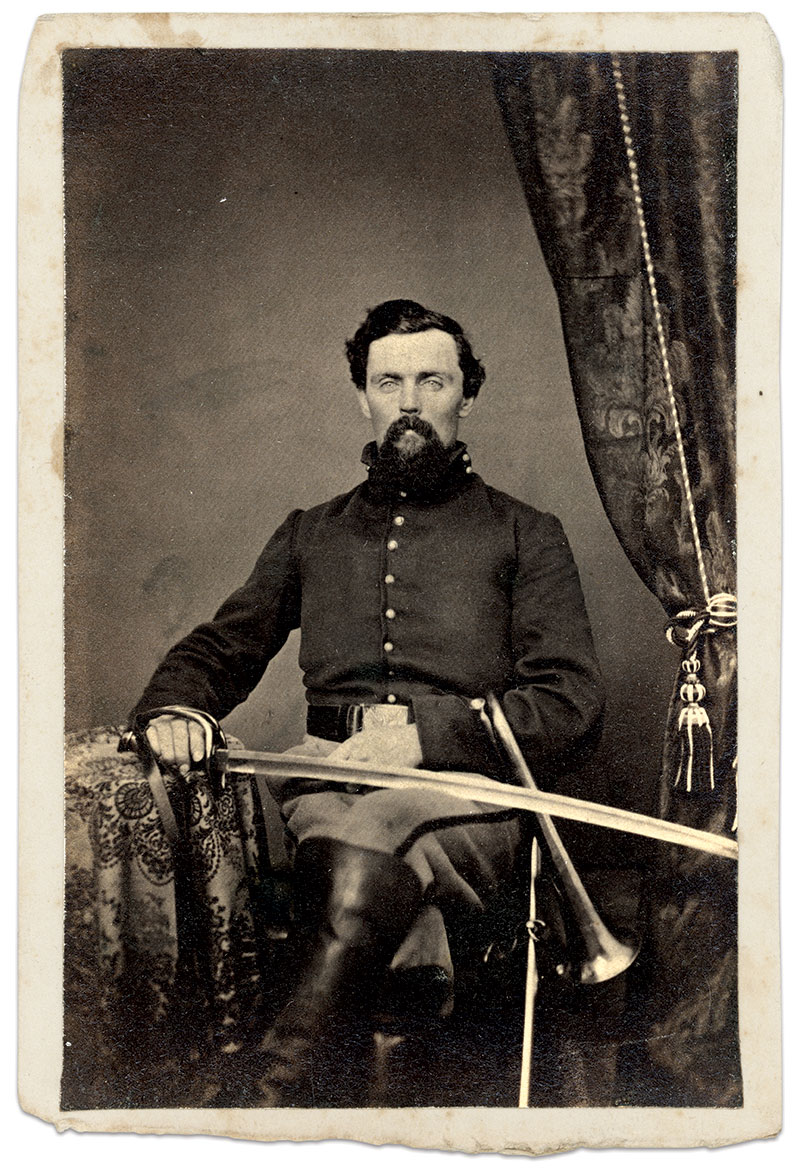The 10th New York Cavalry found itself in a precarious position along the Virginia Central Railroad near Trevilian Station on June 11, 1864. In the immediate aftermath of a successful charge, the troopers had no time to celebrate as enemy forces fired back from the front and flank. To make matters worse, shells from supporting Union cannon in the rear fell short of their target.
The friendly fire prompted the commander of the New Yorkers, Maj. Matthew H. Avery, into action. He called for a volunteer to warn the artillerymen to elevate their gun tubes or cease the barrage. Trooper Herbert Elon Farnsworth immediately stepped forward. To deliver the message, the regiment’s 29-year-old sergeant major had to cross a ridge swept by Confederate fire.

Farnsworth understood the risks. A peacetime farmer who started his service back in 1861 as musician, he had proved his value as a leader and earned his sergeant major’s chevrons in 1862. He and his pards participated in various operations as part of the Military District of Washington and the Army of the Potomac.
In front of the murderous ridge near Trevilian Station, the regiment’s historian described Farnsworth’s fate. He “walked rapidly across the open space to the wood beyond, where he found and mounted his horse and delivered his message.” The recipient, Brig. Gen. David M. Gregg, relayed the information to the commander of Battery M, 2nd U.S. Artillery, who ordered his men to stop firing.
Trevilian Station went down in history as a Confederate victory because Union forces failed to achieve the mission of distracting Gen. Robert E. Lee to allow Maj. Gen. Ulysses S. Grant to steal a march across the James River into Petersburg.
Trevilian Station can also be remembered for the extraordinary heroism of a sergeant major that risked his life to stop a threat that might have taken the lives of his comrades. Maj. Avery recognized Farnsworth with a promotion to lieutenant weeks later, and he ended his service in 1865 as captain of his company.
In 1898, another Union veteran, President William McKinley, recognized Farnsworth with the Medal of Honor for his courage on that June day in 1864. By this time, Farnsworth had settled in Washington State. He lived until age 73, dying in 1908 on the Fourth of July. He outlived two wives, and two children survived him.
SPREAD THE WORD: We encourage you to share this story on social media and elsewhere to educate and raise awareness. If you wish to use any image on this page for another purpose, please request permission.
LEARN MORE about Military Images, America’s only magazine dedicated to showcasing, interpreting and preserving Civil War portrait photography.
VISIT OUR STORE to subscribe, renew a subscription, and more.

